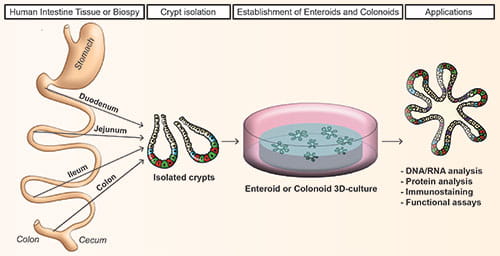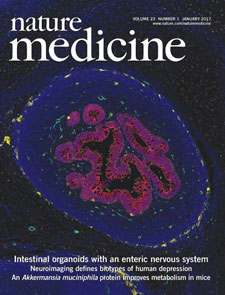Modeling a Human Gut
A previous, major advancement in the intestinal stem cell (ISC) field was the establishment of in vitro culture techniques to maintain and expand individual murine intestinal stem cell using defined growth factors to replace the normal niche signals. Out of this work, our lab has developed in vitro culture techniques to maintain and expand human ISC derived from biopsies.
Utilizing these in vitro culture techniques, the Helmrath Lab is now able to culture ISC derived from a variety of diseased tissues. These techniques are advancing our understanding of disease-mechanism processes, which we apply to our study of infectious diseases (especially intestinal infections).
 Figure 1 - Workflow of crypts dissociation and generation of human enteroids and colonoids in culture.
Figure 1 - Workflow of crypts dissociation and generation of human enteroids and colonoids in culture.
As part of this research, we recently made a breakthrough by generating a vascularized and functional human intestine through a murine model. This novel intestinal model should pave the way for unprecedented studies of human intestinal physiology, disease, and translational studies.
Through our work on this project, strong collaborations have been established between Cincinnati Children’s and University of Cincinnati researchers. Together, we are currently studying ISC derived from patients with cystic fibrosis which will open new ways to screen drugs.




